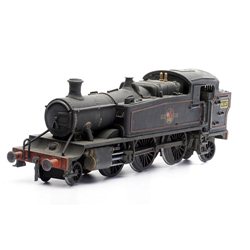Regardless of the subject matter, many model kits are supplied with decals that can be applied to the finished model....
No products
Product successfully added to your shopping cart
There are 0 items in your cart. There is 1 item in your cart.
Search Tips
Christmas and New Year
We are dispatching orders every weekday apart from Christmas Day, Boxing Day and New Year's Day.
If you order is time critical, select next day delivery at checkout.
The shop in Sandown is closed from 25th December, reopening on 30th December.
How much should I spend on a locomotive?
It goes back to the old saying: you get what you pay for.
The more expensive locomotives out there have slightly better detailing when it comes to paint and overall finish. You can feel the quality when you hold them. They are also usually heavier, providing more pulling power and giving you more control especially at low speed.
However, the cheaper locomotives are just as good if not so well detailed. If you are building your layout on a budget this is the way to go. You can always buy your dream engine at a later date.
Also if you are planning on an analogue layout but intend to change over to DCC at a later time, you may want to think about an engine that is DCC ready. This will help with the transition from analogue to digital.
Click here to receive the tips weekly in your mailbox. You can unsubscribe at any time.




.jpg)





